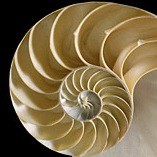You can download it here: first is an updated explanation in text, and the one below it is a brief one-page summary + a Quranic Architecture chart for illustration:
This is a shortened version of the original that may help assimilate the idea (which can get very complex the more details you include). Photo of Al-Fatiha’s structure is below.









